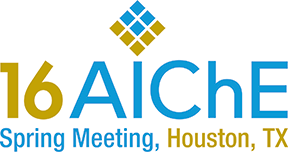

PHA and LOPA facilitators may struggle with Human Factors and Administrative controls in their team sessions for a variety of reasons. These could include: complaint from the PHA team that Operators are not given enough credit; scenarios where an Operator is the “cause” and the “cure” (the same or different Operator); scenarios that involve high hazards that are purely human factor and administrative control related (i.e. not related to equipment malfunction or external events); and scenarios that involve Operator tasks performed on a high frequency basis (i.e. one or more times per day).
The PHA team may get “stuck” and be tempted to deem these scenarios as “non-LOPAable”, which is correct, but then fail to follow-up with an appropriate analysis.
Other tools such as Human Factor Checklists and Procedural PHA do not directly address these issues in a meaningful or quantifiable way.
A better methodology is needed to handle human factors and administrative controls when quantifying initiating cause frequencies and IPL credits in PHA and LOPA, and is the topic of this paper. The methodology is aligned with the work of Swain and Guttmann (1983) Handbook of Human Reliability Analysis (NUREG/CR-1278). This paper will describe how the method can be applied to the semi-quantitative needs of PHA and LOPA. The results may also be used as an input to further QRA (Quantitative Risk Assessment).
The method begins with a well conducted PHA that will uncover the high hazards associated with mis-application of an SOP (standard operating procedure), or other critical Operations based human error. From here, these scenarios become candidates for a Human Reliability Assessment (HRA).
The HRA is conducted as a “talk-through” consisting of two parts: (1) a qualitative task analysis of the specific steps of an SOP that, if omitted could lead to the scenario of concern from the PHA (errors of commission may be treated as well), or a task analysis of the Operator response IPL credited in the PHA; and (2) a quantitative judgment of the key PSFs (Performance Shaping Factors) related to operator performance as initiating event or IPL.
The first part of HRA (task analysis) provides a qualitative benefit for understanding the Operator’s relationship to the SOP, or IPL, in question. Is the procedure followed, is it reviewed before the task is performed, is it carried as the task is performed, does it utilize a check-list format, and is the procedure performed so often it becomes a skill-based task? Task analysis also scores the quality of a procedure in terms of complexity and specificity. Task analysis addresses dependencies within an individual (awareness of one’s own errors) and between individuals (second operator). Task analysis identifies recovery factors from human error.
The output of task analysis includes drawing a Human Reliability (HR) Event Tree. The (HR) Event tree is fit for purpose. It is constructed step-wise from the critical steps in the SOP and looks different than traditional event trees. When the HR Event Tree is solved the results can be fed back into PHA and LOPA as a frequency or probability.
The second part of HRA (look at key PSFs) provides adjustment factors for the basic human error probabilities (BHEP) found in the Swain and Guttmann (1983) Handbook. The adjusted BHEP are used to quantify the HR Event Tree from the task analysis. The selection of the adjustment factors is relative to the best available technology at the time the Handbook was published. There are literally 1000’s of PSFs in addition to human psychology (fears, motivations, etc.) that make quantification of human performance problematic. The method presented will focus on those PSFs that are measurable and have the greatest impact on human performance as it relates to initiating cause frequency or IPL.
A follow-up process walk-through, or model review (if the facility is under construction), is performed as well to validate the findings of the “talk-through”.
This paper will present an overview of the HRA methodology, worksheets used to develop and document the HRA, examples of HR Event Trees, how to incorporate the results back into PHA and LOPA, and lessons learned from conducting HRAs.
